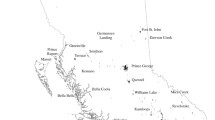Abstract
Predicting indoor radon potential has gained in importance even asthe national radon programs began to wane. A cooperative study to produceradon potential maps was conducted by the Environmental Protection Agency(EPA), U.S. Geological Survey (USGS), Department of Energy (DOE), and LawrenceBerkeley Laboratory (LBL) with the latter taking the lead role. They developeda county-wide predictive model based dominantly on the National Uranium ResourceEvaluation (NURE) aerorad data and secondly on geology, both small-scale databases. However, that model breaks down in counties of complex geology anddoes not provide a means to evaluate the potential of an individual home orbuilding site. In this current study, soil-gas radon measurements on a largescale are shown to provide information for estimating radon potential at individualsites sort out the complex geology so that the small-scale prediction indexcan be validated. An example from Frederick County, Maryland indicates a positivecorrelation between indoor measurements and soil-gas data. The method doesnot rely on a single measurement, but a series that incorporate seasonal andmeteorological considerations.
Similar content being viewed by others
References
A. V. Nero, M. B. Schwehr, W. W. Nazaroff, K. L. Revzan, Science, 234 (1986) 992.
A. B. Tanner, in: The Natural Radiation Environment, J. A. S. Adams and W. M. Lowder (Eds), University of Chicago Press, 1964, p. 161.
G. M. Reimer, S. L. Szarzi, J. M. Been, U.S. Geological Survey Open File Report, 92–391, 1992, p. 7.
G. M. Reimer, Geophys. Res. Lett., 17 (1990) 809.
M. L. Lahti, L. K. Killoran, R. F. Holub, G. M. Reimer, J. Radioanal. Nucl. Chem., 236 (1998) 253.
A. I. Jonas, G. W. Stose, Geological Map of Frederick County Maryland, 1938, 1 plate.
J. S. Duval, G. M. Reimer, R. R. Schumann, D. E. Owen, J. K. Otton, U.S. Geological Survey Open-File Report, 90–648, 1990, p. 42.
G. M. Reimer, U.S. Environmental Protection Agency Report 402–R-93–031, 1993, p. IV?1–IV?29.
S. Asher-Bolinder, R. R. Schumann, D. Owen, Geophys. Res. Lett., 17 (1990) 825.
Author information
Authors and Affiliations
Rights and permissions
About this article
Cite this article
Reimer, G. Ground-truthing predicted indoor radon concentrations by using soil-gas radon measurements. Journal of Radioanalytical and Nuclear Chemistry 249, 163–166 (2001). https://doi.org/10.1023/A:1013213720510
Issue Date:
DOI: https://doi.org/10.1023/A:1013213720510




